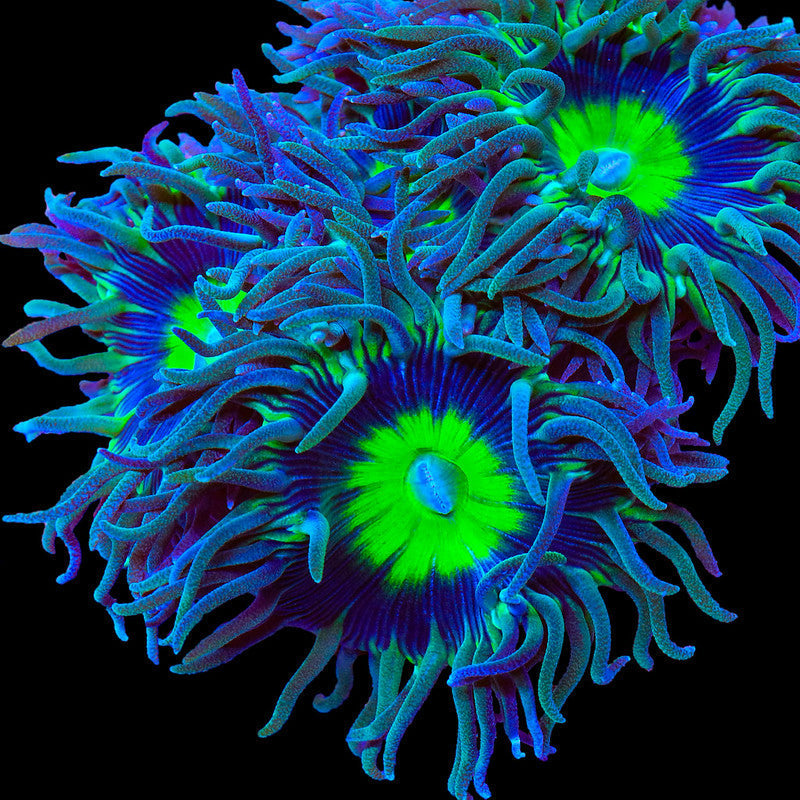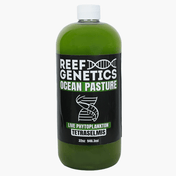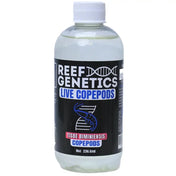Introduction: What is Duncan Coral and Why It Matters for Reef Keepers
Duncan coral (Duncanopsammia axifuga) is an easy and beginner-friendly large polyp stony coral that helps reef aquarists create stunning, low-maintenance coral displays. In this guide, you’ll learn what Duncan coral is, proper care requirements, and how to successfully maintain healthy colonies.
Quick overview covering: coral characteristics, optimal tank conditions, feeding requirements, propagation methods, and troubleshooting tips. Water parameters and environmental conditions matter greatly for the health and success of Duncan coral. This guide provides immediate confirmation of search intent for reef keepers seeking reliable LPS coral options that grow reliably and remain compatible with mixed reef systems.
Understanding Duncan Coral: Key Characteristics and Biology
Core Definitions and Scientific Classification
Duncan coral refers specifically to Duncanopsammia axifuga, a monotypic genus containing a single species. Alternative names include whisker coral, branched disc coral, and duncanops coral, though these terms are sometimes applied incorrectly to related species.
As a large polyp stony coral, Duncan coral belongs to the Dendrophylliidae family (formerly classified under Faviidae). The complete taxonomic classification includes:
- Phylum: Cnidaria
- Class: Anthozoa
- Order: Scleractinia
- Family: Dendrophylliidae
- Species: Duncanopsammia axifuga
Duncan coral is a type of large-polyp stony coral (LPS), recognized for its fleshy polyps and robust skeleton. Among the different types of corals, such as soft corals, SPS (small polyp stony) corals, and LPS corals, Duncan coral stands out for its moderate care requirements and adaptability, making it suitable for a range of reef aquariums.
Large polyp stony corals are characterized by substantial soft tissue polyps extending from rigid, calcareous skeletons, distinguishing them from small polyp stony (SPS) corals that require more intense lighting and pristine water quality.
Physical Characteristics and Growth Patterns
Duncan corals form colonies of multiple fleshy, tubular polyps extending from a shared skeletal base. The main body of each coral, including its calciferous tube, is crucial for identification and proper care, as damage to the body can impact the health of the entire colony. Each polyp reaches 2-3 cm in diameter when fully extended, featuring a central oral disc surrounded by tentacles. The degree to which the tentacles extend can vary depending on environmental factors such as light, current, or feeding, with some polyps showing greater extension under optimal conditions. Tentacle colors range from green, purple, and blue to light brown, while the oral disc often displays vivid teal or green coloration.
The branching structure creates a distinctive flower-like appearance, with symmetrical, daisy-headed polyps densely covering the colony surface. Growth occurs through both branching (axial) patterns that produce upright stalks, and encrusting (laminar) patterns forming bowl-shaped colonies. Under optimal conditions, colonies can expand by adding 1-2 new polyps monthly.
Why Duncan Coral is Important in Reef Aquarium Keeping
Duncan corals excel as beginner-friendly species due to their exceptional adaptability to various tank conditions. Unlike demanding SPS corals, duncan corals tolerate moderate lighting levels and show remarkable resilience to water parameter fluctuations, making them ideal starting points for reef keepers developing their skills.
Their community-safe behavior sets them apart from aggressive large polyp stony corals. Duncan corals lack potent sweeper tentacles and rarely engage in coral warfare, allowing close placement with other peaceful species. This compatibility makes them valuable additions to mixed reef systems where space optimization matters.
Essential Care Parameters and Requirements Table
Optimal Care for Duncan Coral
Proper care for Duncan corals begins with maintaining stable water conditions and gradual acclimation to your tank’s environment.
Lighting:
Duncan corals thrive under moderate lighting, ideally between 100–200 PAR, with an acceptable range of 50–200 PAR. When introducing the coral to brighter areas, increase light intensity slowly to prevent stress or bleaching.
Temperature:
Keep water temperature stable between 75–80°F (24–27°C). Short-term variations between 73–82°F (23–28°C) are acceptable, but frequent fluctuations can lead to stress and reduced polyp extension.
Water Flow:
Provide low to medium flow—gentle, indirect currents that allow the polyps to sway without being blasted. Excessive or direct flow can damage their delicate tissue. When positioning the coral, choose an area of the tank that receives consistent but not turbulent movement.
Water Chemistry:
- Salinity: Maintain between 1.024–1.025 specific gravity for optimal stability.
- Calcium: Keep levels at 400–450 ppm to support healthy skeletal growth.
- Alkalinity: Aim for 8–11 dKH to stabilize pH and promote strong growth.
- Magnesium: Maintain 1300–1450 ppm (acceptable range: 1250–1500 ppm) to help balance calcium uptake.
- Nitrates: A moderate level of 5–15 ppm encourages feeding response and coloration; a broader safe range extends from 0–25 ppm. If nitrates or phosphates rise above this, perform water changes or nutrient export to maintain a clean, balanced system.
Consistent parameters and stable conditions are key to keeping Duncan corals open, vibrant, and thriving.
Step-by-Step Guide to Duncan Coral Care Success
Step 1: Tank Setup and Placement
Select an area in the lower to middle regions of your tank that matches the coral's environmental needs, such as low to moderate flow. Provide adequate distance from aggressive neighbors and ensure there is enough space for the long sweeper tentacles to extend without contacting other corals. Position the coral where tentacles can extend fully without contact with rock surfaces or adjacent corals. Prepare stable substrate or rock placement that accommodates branching growth patterns over time.
Step 2: Lighting and Water Flow Configuration
Configure lighting systems to provide 100-200 PAR using full spectrum coral lights. Start new specimens at lower light levels and gradually increase intensity over 2-3 weeks to prevent bleaching. LED systems offer precise control, while T5 fluorescent lights provide excellent color enhancement.
Establish gentle, indirect water movement using powerheads positioned to create broad, laminar flow. Avoid direct streams that cause constant polyp retraction. The goal is subtle tentacle movement that brings food particles within reach, helping to bring essential nutrients to the coral while maintaining extended polyp display.
Step 3: Feeding and Water Quality Maintenance
Implement target feeding schedules using meaty foods like mysis shrimp, frozen zooplankton, and chopped seafood. Duncan coral polyps typically open during the day, making them receptive to feeding and allowing you to easily target them. The coral uses its tentacles to eat food from the water column, grabbing and absorbing nutrients essential for growth and coloration. Feed 2-3 times weekly, directing food directly to individual polyps using feeding tubes or syringes. Well-fed colonies show dramatically improved growth rates and polyp size.
Monitor calcium, strontium, and trace element levels regularly, as rapid growth depletes these nutrients quickly. Test ammonia, nitrite, nitrate, pH, and salinity weekly, maintaining stability rather than chasing perfect numbers. Perform regular water changes of 10-15% weekly to export accumulated waste products.
Common Mistakes to Avoid
Mistake 1: Using excessive lighting over 200 PAR without proper acclimation - Sudden exposure to intense lighting causes polyp retraction and potential bleaching. Always start at lower levels and increase gradually.
Mistake 2: Placing in high direct flow areas - Strong, direct water movement damages delicate polyp tissue and prevents normal feeding behavior. Position corals in areas with gentle, indirect flow patterns.
Mistake 3: Skipping quarantine protocols when introducing new specimens - New corals can introduce pests, diseases, or pathogens that damage existing colonies. Always quarantine for 2-4 weeks before tank introduction. Also, be aware that neighboring corals may send chemical signals or attacks that negatively impact Duncan coral health, so monitor placement and compatibility closely.
If you continue to experience issues, check our additional resources and troubleshooting guides for more detailed solutions.
FAQs about Duncan Coral Care
Q1: How fast do Duncan corals grow new heads?
A1: Under proper conditions, Duncan corals can produce new polyps every 3-6 months, with well-fed colonies showing faster growth rates.
Q2: Can Duncan corals be kept with aggressive fish?
A2: Only reef-safe fish should be housed with Duncan corals, as aggressive species may damage their delicate tube structures.
Q3: What causes Duncan coral polyps to stay retracted?
A3: Common causes include excessive flow, high lighting, poor water quality, or stress from neighboring corals with sweeper tentacles.
Q4: How do I propagate Duncan coral colonies?
A4: Use coral cutters or a bandsaw to separate individual polyps at the base, ensuring each fragment has complete skeletal structure for successful attachment.
Conclusion: Key Takeaways for Duncan Coral Success
Maintain lighting between 100-200 PAR with low to medium indirect water flow to ensure optimal polyp extension and feeding response. Regular feeding with meaty foods like mysis shrimp significantly improves growth rates and overall polyp size development.
Monitor water parameters closely, especially calcium and trace elements essential for skeletal development and colony expansion. Allow natural growth patterns without forcing placement constraints that limit branching access.
Success with Duncan corals requires patience and consistency rather than complex equipment or advanced techniques, making them ideal choices for both beginning and experienced reef keepers seeking reliable, beautiful additions to their coral collections.


















